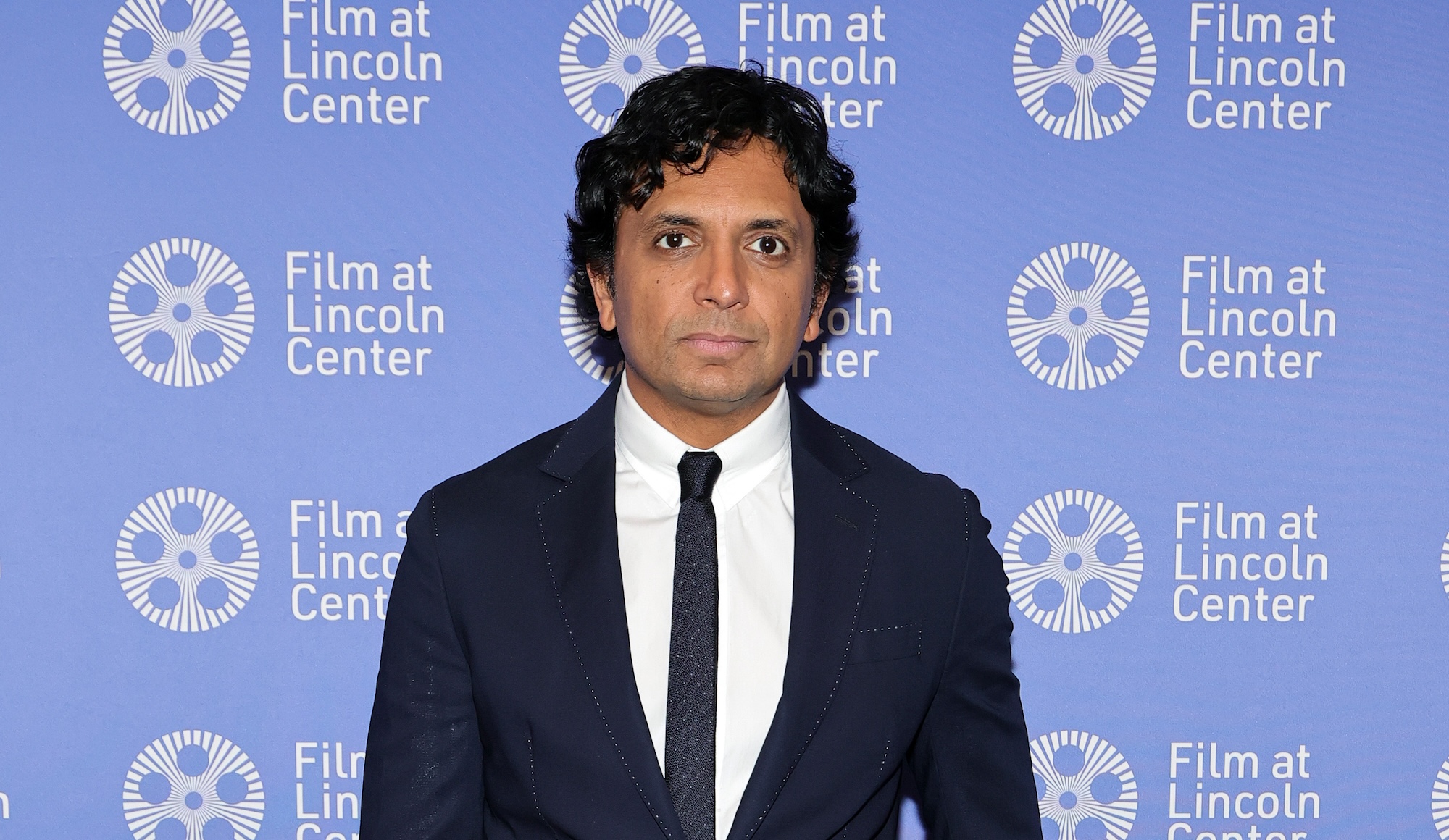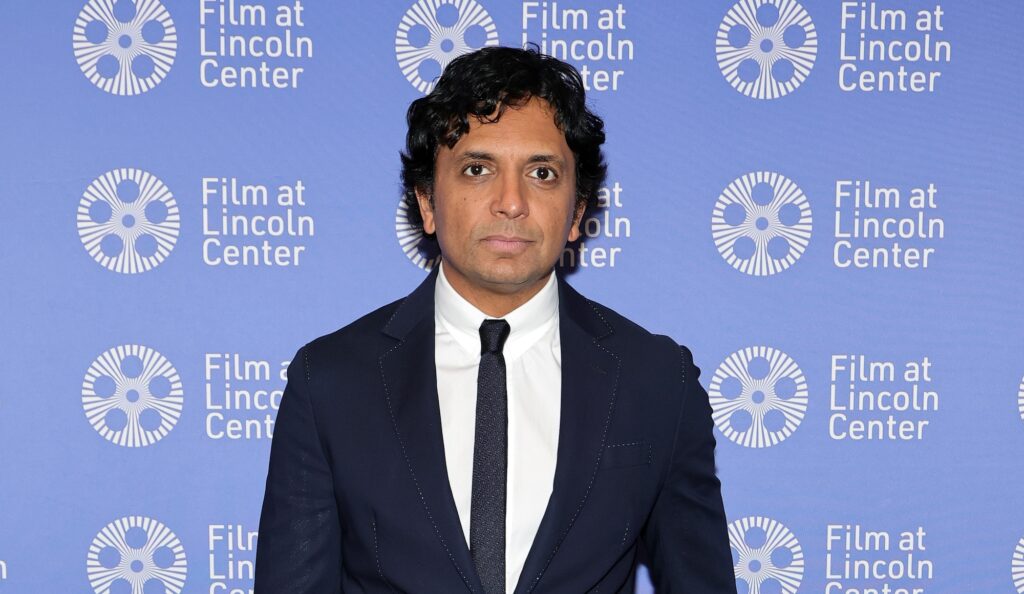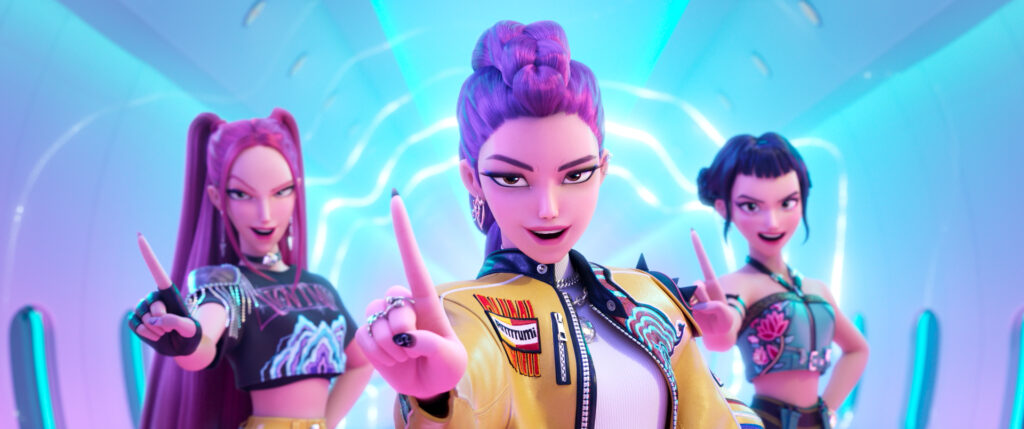For the next week, M. Night Shyamalan is participating in a retrospective of his career at Film at Lincoln Center. It is there that most of Shyamalan’s work is being screened (in 35mm when possible) and paired with some of the idiosyncratic filmmaker’s favorite touchstones. For example Old, a movie about folks unable to physically leave a beach where they age years in a matter of hours, is being double-billed with Luis Buñuel’s The Exterminating Angel, a Spanish classic also about a group of people mysteriously unable to leave a living room days and weeks after their dinner party ended.
Shyamalan is only appearing for a few of the nights at the event to answer questions from audiences, as well as Lincoln Center senior programmer Tyler Wilson. And many of the films he’s on hand for are of little surprise; they’re some of the classics which defined his early career. Movies like The Sixth Sense (1999) or Unbreakable (2000). Yet of the pictures he’s made in the last decade, Shyamalan notably agreed to appear at a screening this past weekend of Split, which was paired with Martin Scorsese’s version of Cape Fear. And to the director, this made perfect sense. After all, when he looks back at the sweep of his career, Shyamalan views 2016’s Split and the movie that directly preceded it as a demarcation point.
“This movie came right after The Visit, and these two were kind of the new rebirth of how I wanted to make movies,” Shyamalan told the New York audience. “I feel like the old version of when I came into making movies in Hollywood, it was built for me. It was built for original blockbuster movies. The Sixth Sense came out [in the year of] The Matrix and American Beauty, and Magnolia… Being John Malkovich, The Blair Witch Project. Everything was aimed at original filmmaking. And as that shifted, I felt I was getting squeezed out of it.”
Shyamalan viewing the past 10 years of his career as a renaissance is interesting since it matches with the general critical consensus about when he began financing his own stories, as well as working with collaborators like producer Jason Blum. But Shyamalan also explicitly talked about how therapeutic the process was after the movies he made directly beforehand, with the filmmaker referring to the period of time when he made The Happening (2008), The Last Airbender (2010), and After Earth (2013) as “the six years.”
“You get tired of having to have your own voice,” Shyamalan said of that period in his life. “The world tries to talk you out of your voice and say that doesn’t work and get in line, who do you think you are? All of these things subconsciously fight you. And I think in that era before the six years, I kept thinking there was going to be some place I could go where I’d arrive at where there would be acceptance. We all want acceptance. I wanted to be fiercely me and I wanted to be accepted in the group. And that era was for me capitulating and saying ‘who do I think I am? Let me just join.’”
Looking back on it, Shyamalan conceded that he was not professionally happy during those years, although at the same time he shows some gratitude, singling After Earth in particular as the “end of an era.” (Notably, neither After Earth or The Last Airbender are included in the Lincoln Center retrospective either.)
“I enjoyed all my experiences, I learned a ton,” the writer-director said. “I made bigger movies and I wasn’t good at it, in my opinion. I wasn’t joyful. And that’s when I said, ‘We’re mortgaging the house.’ I’m making a movie where I ask no one’s opinion, I’m making something that they’ll say will never work.”
He went on to make The Visit, an odd blending of horror, comedy, and found footage wherein young teenagers go to stay with arguably the creepiest grandparents in cinema history. That in turn led to Split, which before being revealed to secretly be a sequel to Unbreakable during a post-credit sequence (a feat the filmmaker quipped was a “marketer’s nightmare”) largely dealt with one magnificently daring performance of a person living with Dissociative Identity Disorder… and the teenage girls his alternate personalities kidnapped with the intent of feeding to yet another cannibalistic personality.
“Literally my own agents were passing on my own script,” Shyamalan laughed about Split, adding they claimed no one would agree to play the film’s central character (and indeed Joaquin Phoenix originally was cast and then dropped out two weeks before production on Split was due to begin, ultimately being replaced by a superb James McAvoy). “I remember walking out of that meeting and going, ‘Wow no one is going to see this until I show it to them,’” Shyamalan recalled.
The result was one of the bigger successes in Shyamalan’s career, and a confirmation in Shyamalan’s mind that if you want a 20 or 30-plus year career as an artist, you need to constantly reinvent yourself with ideas that are uncomfortable. He even likened himself as a collaborator to the Vampire Lestat. “I’m an old vampire, so I want a young one,” he joked about his penchant for hiring new talent he’s never worked with before, both behind and in front of the camera. (Split notably marked Anya Taylor-Joy’s second big horror movie success less than a year after The Witch.)
“As soon as I said, ‘I’m just me,’ everything got easier,” Shyamlaan noted. “And if you guys get it, you get it, but I gotta be me.”
The post M. Night Shyamalan Reflects on His ‘Rebirth’ Era Following After Earth Disappointment appeared first on Den of Geek.




